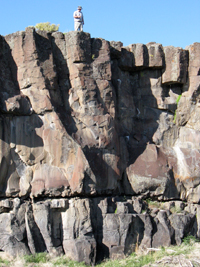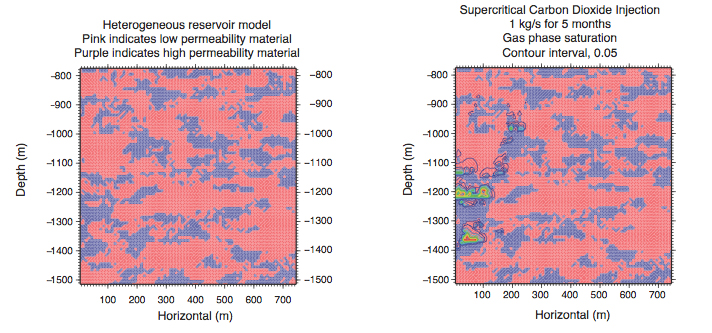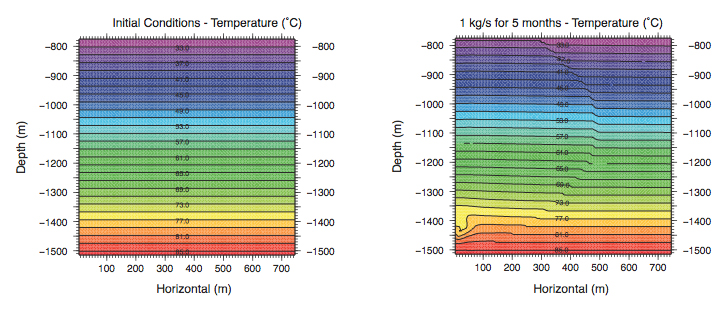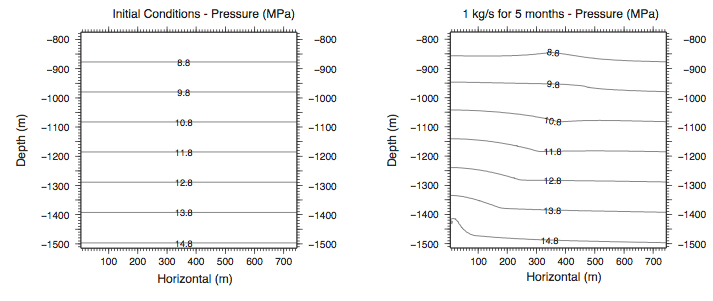Carbon Sequestration
 |
Geologic carbon sequestration is one promising approach to managing anthropogenic carbon emissions.
Here in the state of Idaho, the near ubiquitous presence of basalt aquifers in the more densely populated portions of the state
presents an attractive possibility for carbon storage in basalt fracture networks. The theory is that supercritical carbon dioxide,
injected at great depths below ground, may react with feldspar minerals to produce carbonate minerals thereby permanently trapping
carbon dioxide that would otherwise be released into the atmosphere. In addressing this field of research, the Computational Hydrology Group's Ryan Pollyea is performing numerical modeling experiments of non-isothermal multiple phase carbon dioxide injections in supercritical temperature and pressure regimes. The images below represent an example of carbon dioxide injection into a synthetic heterogeneous basalt aquifer. This is an exciting field of research and presents students with numerous opportunities for site characterization, reservoir simulation research, and numerical flow and transport modeling. For more information, contact Dr. Jerry Fairley at jfairley@uidaho.edu. |
|



|
||







